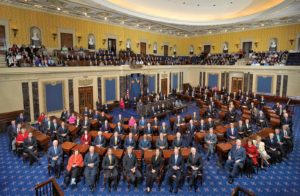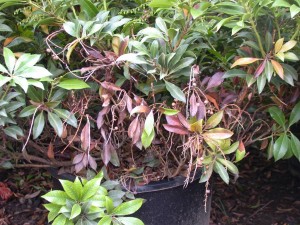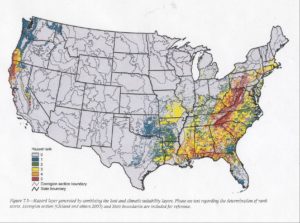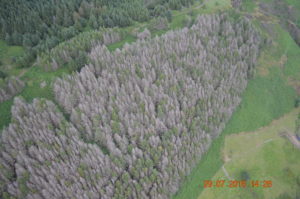In May I blogged about adoption by the House of Representatives of its version of the Farm Bill, which will govern a wide range of policies for the next five years. I reported that the bill included weakened versions of a provision CISP has been seeking to establish programs to support long-term strategies to counter non-native, tree-killing insects and pathogens, e.g., biocontrol and breeding of trees resistant to pests.
I also reported that the House Farm bill contains provisions to which there is significant opposition from the larger environmental community. Several would gut some of our country’s fundamental environmental laws which have protected our health and natural resources since the early to mid-1970s. These provisions would:
- Allow the U.S. Forest Service and the Interior Department’s Bureau of Land Management to decide for themselves whether an activity might “jeopardize” an endangered species (eliminating the need to consult with the U.S. Fish and Wildlife Service or National Marine Fisheries Service) (Section 8303 of the House Bill);
- Allow the U.S. Forest Service and Bureau of Land Management to avoid preparing an environmental assessment under the National Environmental Policy Act (NEPA) for a long list of actions which currently must be assessed. That is, they could claim a “categorical exclusion” when taking a wide variety of “critical” actions aimed at addressing several goals. These include countering insect and disease infestations, reducing hazardous fuel loads, protecting municipal water sources, improving or enhancing critical habitat, increasing water yield, expediting salvage of dead trees following a catastrophic event, or achieving goals to maintain early successional forest. These “categorical exclusions” would apply to projects on up to 6,000 acres. (Sections 8311 – 8320); and
- Require the EPA Administrator to register a pesticide if the Administrator determines that the pesticide, when used in accordance with widespread and commonly recognized practices, is not likely to jeopardize the survival of a species listed under the Endangered Species Act or to alter critical habitat. That is, the Administrator would not be required to consult with the U.S. Fish and Wildlife Service or National Marine Fisheries Service when making such determinations unlike under current law. (Section 9111).
The Senate passed its version of the Farm Bill in late June. Unfortunately, the Senate bill does not include the long-term restoration program CISP seeks. However, it doesn’t include the above attacks on environmental laws, either.
With the current Farm Bill set to expire on September 30th, there is considerable pressure to adopt a final version soon. House and Senate staffers have been meeting to find common ground. Representatives and Senators who are on the joint Conference Committee – charged with working out the final bill – will hold their first meeting next week, on September 5th.
In preparation for the meetings of the Conference Committee, 38 Senators have written to their two colleagues who will lead the Senate conferees. Their letter voices strong opposition to changing long-standing environmental law:
“These harmful riders, spread throughout the Forestry, Horticulture, and Miscellaneous titles of the House bill, subjected the legislation to unnecessary opposition on the House floor and now complicates [sic] the bipartisan cooperation needed to pass a final conference report.
Again, we write to express our strong opposition to gutting bedrock U.S. environmental and public health protections with provisions that threaten our air, water, lands, and wildlife.”
Senators signing the letter are:
California: Feinstein & Harris; Colorado: Bennet; Connecticut: Murphy & Blumenthal; Delaware: Carper & Coons; Florida: Nelson; Hawai`i: Hirono & Schatz; Illinois: Durbin & Duckworth; Maryland: Cardin & Van Hollen; Massachusetts: Warren & Markey; Minnesota: Klobuchar & Smith; Michigan: Peters; Nevada: Cortez Masto; New Hampshire: Shaheen & Hassan; New Jersey: Menendez & Booker; New Mexico: Udall & Heinrich; New York: Gillibrand; Oregon: Wyden & Merkley; Pennsylvania: Casey; Rhode Island: Reed & Whitehouse; Vermont: Sanders; Virginia: Warner & Kaine; Washington: Murray & Cantwell; Wisconsin: Baldwin.
If your Senators signed the letter, please email, call, or write to thank them immediately. If your Senators didn’t – please urge them to express their support for its content.
Posted by Faith Campbell
We welcome comments that supplement or correct factual information, suggest new approaches, or promote thoughtful consideration. We post comments that disagree with us — but not those we judge to be not civil or inflammatory.



